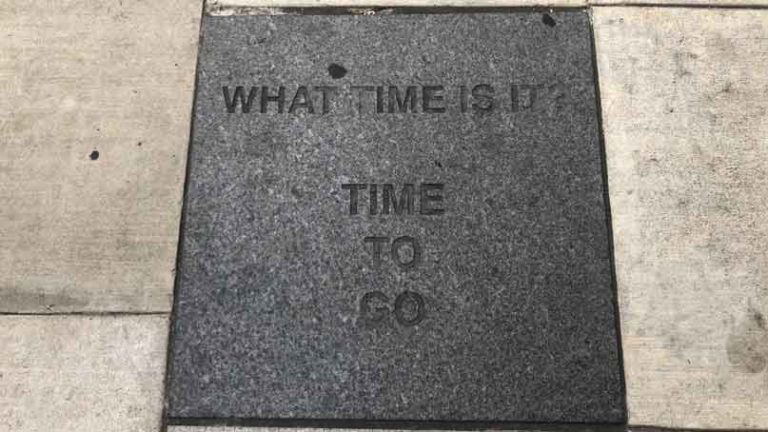Like others that keep a spending diary or a food diary, I keep a time diary. I have kept a time diary for over 20 years!
I started doing it because I was working in the professional services field where you had to track your time to bill your clients. You also had to calculate how much of your time was billable to clients versus non-billable (and billability was an important factor in performance reviews!).
I realized how useful the time-tracking was to the company and figured it would be just as useful for my own personal business, and it has proven to be immensely valuable.
I track how I spend my time in half-hour increments. I go one step further and also assign each of the activities to a client. My clients include actual consulting clients but also personal clients (e.g., family, household) or goals (e.g., exercise, self-care).
Excel is all you need – my first career was in finance so I love Excel – and appreciate it’s simplicity and versatility! Each year of my time diary is one spreadsheet. Here’s a snapshot from this year:
| Date | Client | Activity | Duration |
| 1/1/18 | CLIENT A | calls and emails | 0.5 |
| 1/1/18 | exercise | Tracy Anderson cardio | 0.5 |
| 1/1/18 | household | cooking | 0.5 |
| 1/1/18 | bus marketing | social media posts and comments | 0.5 |
| 1/1/18 | bus operations | scan receipts | 1 |
| 1/1/18 | real estate | Spanish practice | 0.5 |
| 1/1/18 | self-care | meditation | 0.5 |
Time Diary makes you more aware of how you spend your time
With the different columns, I can sort and track different things.
- I sort by date to see what’s coming up.
- I sort by client to see how many hours to bill my time-bound clients, or just for me to see how much time I’m devoting to a client or goal.
- I sort by activity to see how much time I’m spending on something.
One year when I had lost a significant amount of weight and figured it was because I was exercising SO much, I totaled up my exercise hours and realized I was working out 8 hours a week on average – which actually doesn’t seem like that much and reminds me that I should be able to keep that up (I’m currently down to less than 4 hours on average).
In the short-term, the time diary makes me more aware of how I am spending my time day-to-day or week-to-week. Over the long-term, I can see patterns in my behavior – am I wasting time on non-billable activities?
If I spend 3 hours mindlessly watching TV, I don’t track that time back to a client, so it is truly lost. Had I spent the 3 hours researching potential investments, for example, then that would be “billed” to finances or real estate (depending on the type of investment).
When you have to write something down, it makes you more accountable and has definitely helped me let go of some time-wasting habits.
Time Diary helps you plan for the future

I recently set up my time diary for 2019. Since the time diary is a tracking spreadsheet, I’m obviously not already tracking 2019 time spent, but I am putting in entries for activities and clients I know will happen in the year. I can also put a placeholder for time I think each activity or appointment will take.
In this way, the time diary acts as a time budget and also a calendar. After all, I know what things are going to happen and approximately when.
I have daily activities – e.g., exercise, meditation. I have weekly activities – e.g., Sunday mass, cabaret class (my latest fun activity which runs Wednesdays thru March!). There are also bimonthly, monthly or ad hoc activities, such as doctor appointments or bills to pay.
Set it and forget it
By putting as many activities down in my future time diary as possible, I don’t have to actively remind myself or subconsciously carry around the worry that I may forget something important.
I can “set it and forget it”, as the rotisserie chicken infomercial goes. I know a prompt will come up on my time diary. I even set prompts for prompts. For example, I put in a task, “make appointment for Dr. ___” for around 11 months after my current physical – I don’t know when the appointment will be exactly, but I know roughly when it should be.
So I set a reminder of when to act, and forget about it till then.
Keep track of how long things REALLY take

Having tracked the time it takes to actually get something done (like writing a blog post) I know how long activities REALLY take.
Most people overestimate what they can accomplish in a year – and underestimate what they can achieve in a decade!
— Anthony Robbins
I have found that there is a tendency to overestimate how much we can get done by the hour and the day, not just by the year.
But if you keep a time diary, you have the data to refer to. This makes my project planning and consulting proposals that much more realistic (and therefore profitable). I’m less likely to say I can turn around an article in a couple of hours, when I know from experience and actual tracking, it takes twice that long.
Make it easier to prioritize and say No
Having the activities pre-filled in my time diary and having realistic time estimates on how long things take help me stay realistic about my commitments.
I have over 6,500 entries in my 2019 time diary already. Keep in mind that one daily activity shows up as 365 entries, so it’s easy to rack up a lot of entries when you commit to daily habits like meditation, exercise, journaling and reading!
By putting in these activities now, I won’t overextend myself when opportunities come up – I can just refer to the spreadsheet and see how much bandwidth I truly have. If I want to say Yes to something new, I know to make alternative arrangements if I can see there is an unrealistic number of hours being committed. Or I can move things to a different month that is less busy.
January always will have a week in Costa Rica because our condo board meets at that time. April always will have time blocked for tax deadlines. September was typically blocked out for school activities (though we’ll be empty-nesters by September 2019 so next year will have a different September).
Time Diary Will Change How You Live And Work
If you have never kept a time diary, I strongly recommend it. It has been a game-changer for me and also for my coaching clients who complain that they don’t have enough time.
One client had to spend more time developing business rather than executing business as he was moving up at his professional services company. He started a time diary with separate client entries for business development activities versus project execution. With the time diary, he saw right away that his time allocation was even more skewed than he realized towards project execution. No wonder he was falling behind his sales quota!
The time diary helped him reorient his calendar, his energy and his focus, and leapfrogged his career.
======
How about you? What would happen if you changed how you spend your time in 2019?


 We are Scott and Caroline, 50-somethings who spent the first 20+ years of our adult lives in New York City, working traditional careers and raising 2 kids. We left full-time work in our mid-40’s for location-independent, part-time consulting projects and real estate investing, in order to create a more flexible and travel-centric lifestyle.
We are Scott and Caroline, 50-somethings who spent the first 20+ years of our adult lives in New York City, working traditional careers and raising 2 kids. We left full-time work in our mid-40’s for location-independent, part-time consulting projects and real estate investing, in order to create a more flexible and travel-centric lifestyle.  Financial independence and early retirement is not something we originally focused on, but over time realized it was possible. Our free report,
Financial independence and early retirement is not something we originally focused on, but over time realized it was possible. Our free report, 








This is something I’ve done from time to time as well, and want to do more of. I’ve tried using spreadsheets for it and Toggl – both of which worked, but I felt like something was missing.
How do you reflect on your spreadsheet? That’s something I haven’t done to too much success yet, but am curious how others handle it.
Being an Excel nerd, I use a pivot table at year-end to total up hours per client/ goal. This gives me a snapshot of where I spent my time during the year. I also total up hours on a day-by-day basis to make sure I’m not setting myself up for a 25-hour day — it has happened! I can the proactively decide what can be moved. I regularly total up hours by client to create invoices or to project time-spend for proposals.Finally, I make sure that my clients/ goals from one year are still relevant the next year. I am shifting my consulting priorities in 2019 from recruiting to coaching and teaching so I will be more closely monitoring my time spend by consulting activity to ensure I’m moving in the right direction. Curious to see if any of these ideas are helpful to you. Keep us posted!
Caroline, Thank you so much for this. I’ve recently been looking for a solution to my time-management issues. While I’ve used many time planning and tracking tools, I never understood how to use the information to make better decisions. I’ll use your pivot table suggestion to see how it works.
So glad the Time Diary resonates. I still use it to this day and have almost 30 years of time logs — though I don’t keep old files for that long, I am much more aware of my time. Keep me posted on your experience with tracking your time!